
Leica 75mm f/1.4 Summilux M Lens Review
Introduction
I am fond of the film “look.” In fact, I love the feel of a photograph captured on film. Today though my work demands that I use digital and frankly I don’t miss the smell of chemicals of the darkroom. So, it was a compromise for the longest time to be able to have the best of both worlds.
Leica Monochrom with its omitted Bayer filter and CCD sensor made me fall in love with digital photography. There is something very, very special about CCD sensors. The way they operate is very different than CMOS sensors which create a “film like” look. For this reason, I like my Leica Monochrom, M9-P, and Leica S2 cameras because they all have CDD sensors.
On a sunny Sunday afternoon, I chose to take my Leica Monochrom coupled with my favorite Leica lens Leica Summilux-M 75mm f/1.4 lens on one of my usual city walks. It is my time when I just photograph for the pure pleasure of capturing images that resonate with me.
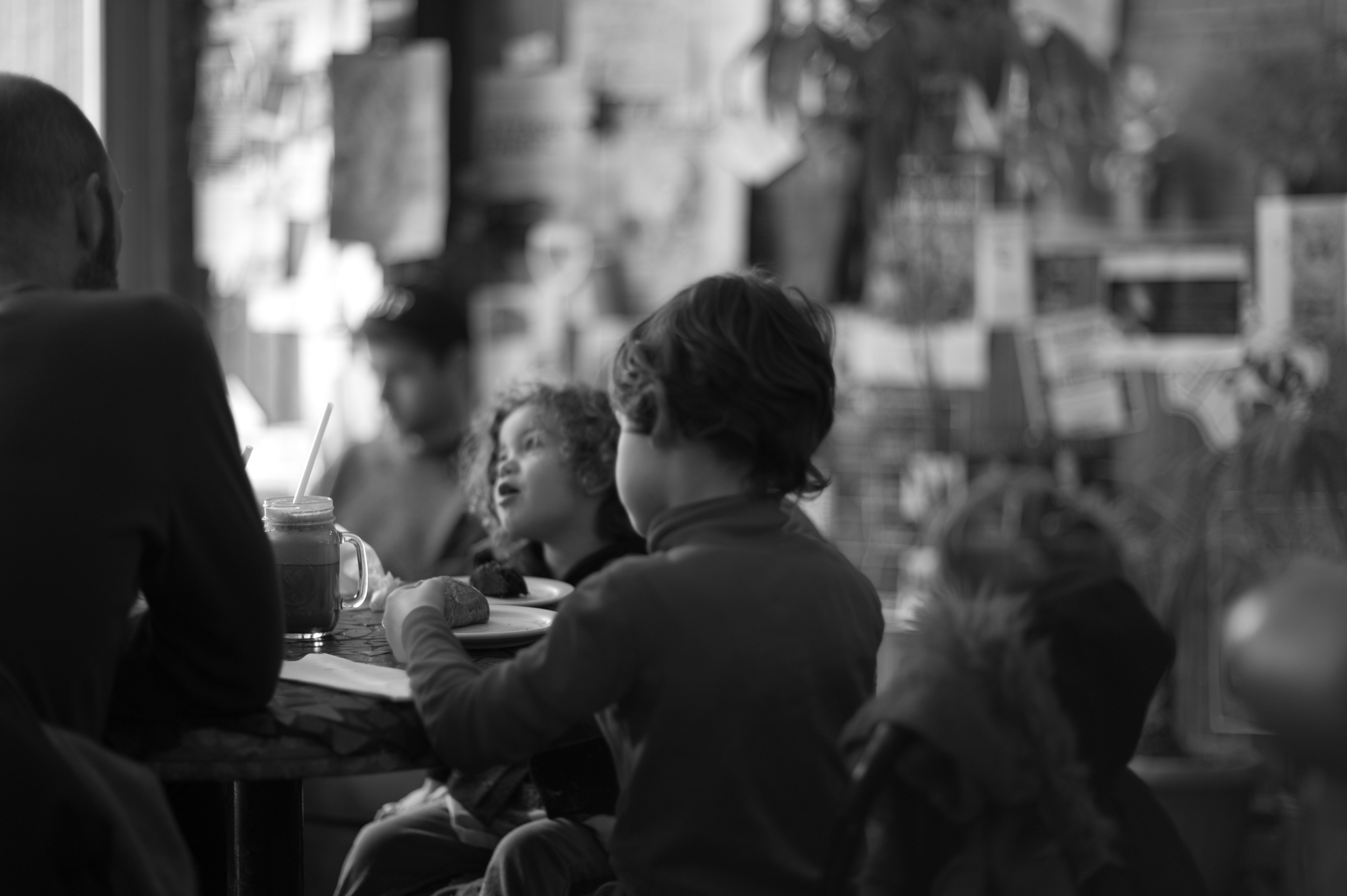
I chose Leica Summilux-M 75mm f/1.4 lens to be paired with my Leica Monochrom camera because it affords me the ability to capture amazing portraits while getting that iconic “Leica look.” Speaking of that iconic “Leica look,” Leica Noctilux and Leica Summilux lenses with their super speeds are excellent in isolating the subject from the background creating that beautiful bokeh which we commonly refer as the “3D pop”.
If you are looking to buy Leica Summilux-M 75mm f/1.4 lens online, you will not find a new one. It was phased out of production some time ago; a close alternative is the new Leica Noctilux-M 75mm f/1.25 ASPH lens which sells around $13,000. The character of fast Leica lenses are legendary because of the way they render color, bokeh and give that elusive character. To better understand why Leica Summilux-M 75mm f/1.4 lens is such a special lens it would be best to take a short journey to the days when it began production.
A Short History
Leica Summilux-M 75mm f/1.4 lens was produced during the time when Dr. Walter Mandler was heading up the design team in ELCAN which was the Canadian division of Leica. As I mentioned earlier, Leica camera no longer makes Leica Summilux-M 75mm f/1.4 lens but offer Leica APO Summicron-M 75mm f/2 lens and the faster sibling Leica Noctilux-M 75mm f/1.25 ASPH lens as alternatives.
Beside my trusted Leica Noctilux-M 50mm f/0.95 lens, Leica Summilux-M 75mm f/1.4 lens is my favorite lens. It was also the favorite lens of Dr. Mandler who also designed it. For those who are not familiar with Dr. Mandler, it would suffice to say that he is the genius behind such legendary lenses like Leica Noctilux-M 50mm f/1.0.
As far as the optical design of Leica Summilux-M 75mm f/1.4 lens is concerned Leica Noctilux-M 50mm f/1.0 lens shares many of its engineering know-how and design. The photographs captured with Leica Summilux-M 75mm f/1.4 lens have a very “unique look,” much different than today’s ultra-sharp, distortion-free Leica lenses. In fact, each lens manufactured then was made hand-ground lens elements creating slight differences in rendition making each lens unique.
As I mentioned earlier, Leica Summilux-M 75mm f/1.4 lens renders very similar film-like feel as the legendary Leica Noctilux-M 50mm f/1.0 lens especially when the lens is used at wide-open aperture. The shallow depth of field in both lenses lends a “dream-like” quality to the photographs which resonate with the film era of the 1960s and 70s.
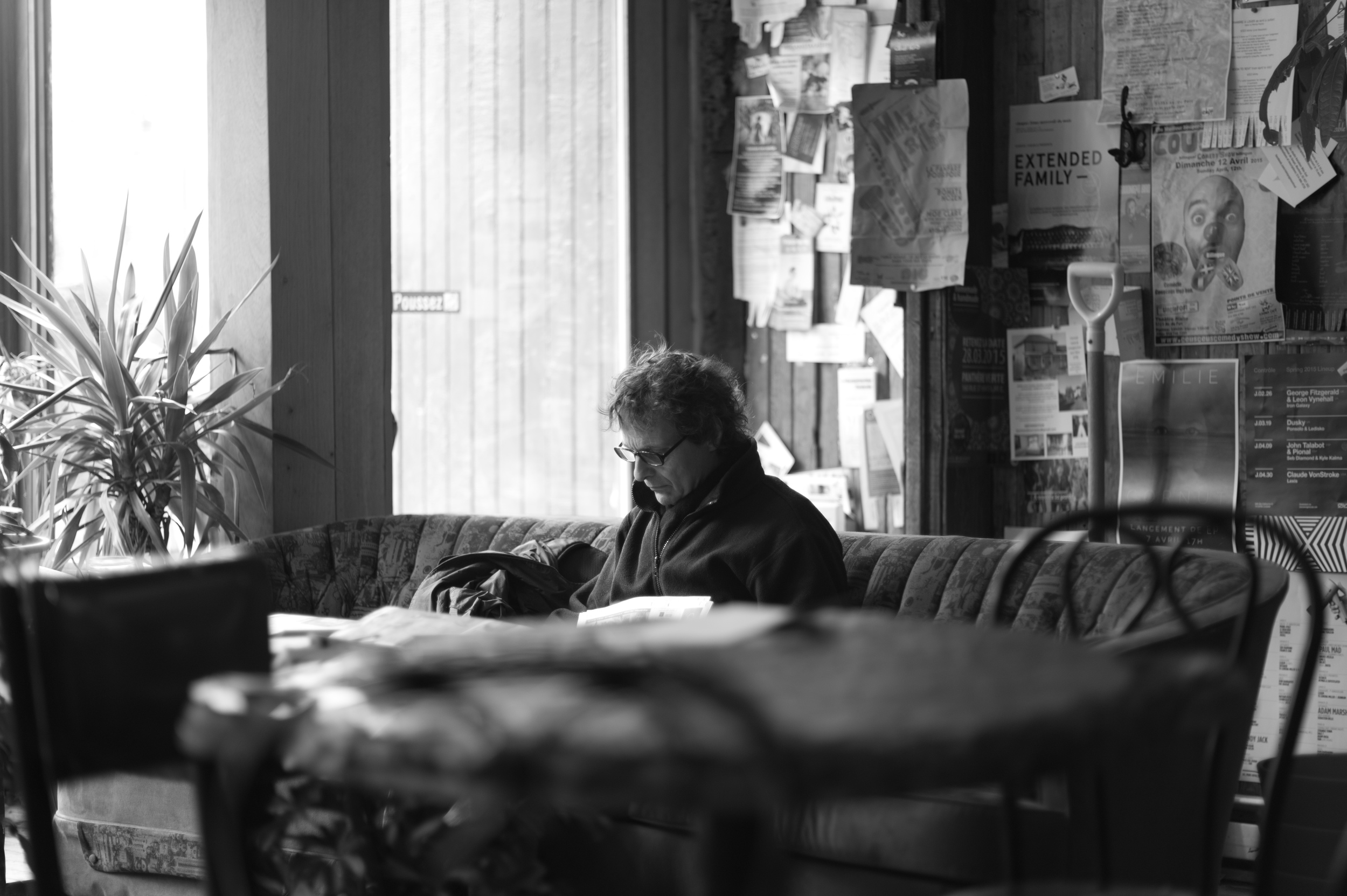
Sundays are great for photographing people as they are often more relaxed and calm. City streets and cafes are filled with men and women who want to enjoy their weekend and a Leica rangefinder is the perfect instrument to use in photographing casual scenes from daily life.
As I began to walk in the part of Montreal called Mile End where much of the artistic community of the city lives, I began to think about the fact that no matter how we may share similarities we are also so different. That we could listen to the same piece of music or look at a photograph and connect to it in different ways. I suppose that is what makes life interesting.
I am pointing this out because when I sat in one of my favorite cafes to enjoy a cup of coffee, these were the thoughts that were brewing in my mind. I looked around me and saw everyone had their own “world”.

There was a family of a table, two children and in a constant state of change how different they would be in 2 years, five years or even ten years. Here I was witnessing a moment of time in their lives, and I had my Leica to record it for eternity.
Photographers are observers to life. We are the artists painting with light what we see before our eyes, telling our version of the story. Much like the painter who uses his paint brush and colors to create his vision, we use our cameras. Our lenses are our color palettes, painting life’s moments in our view of observation.
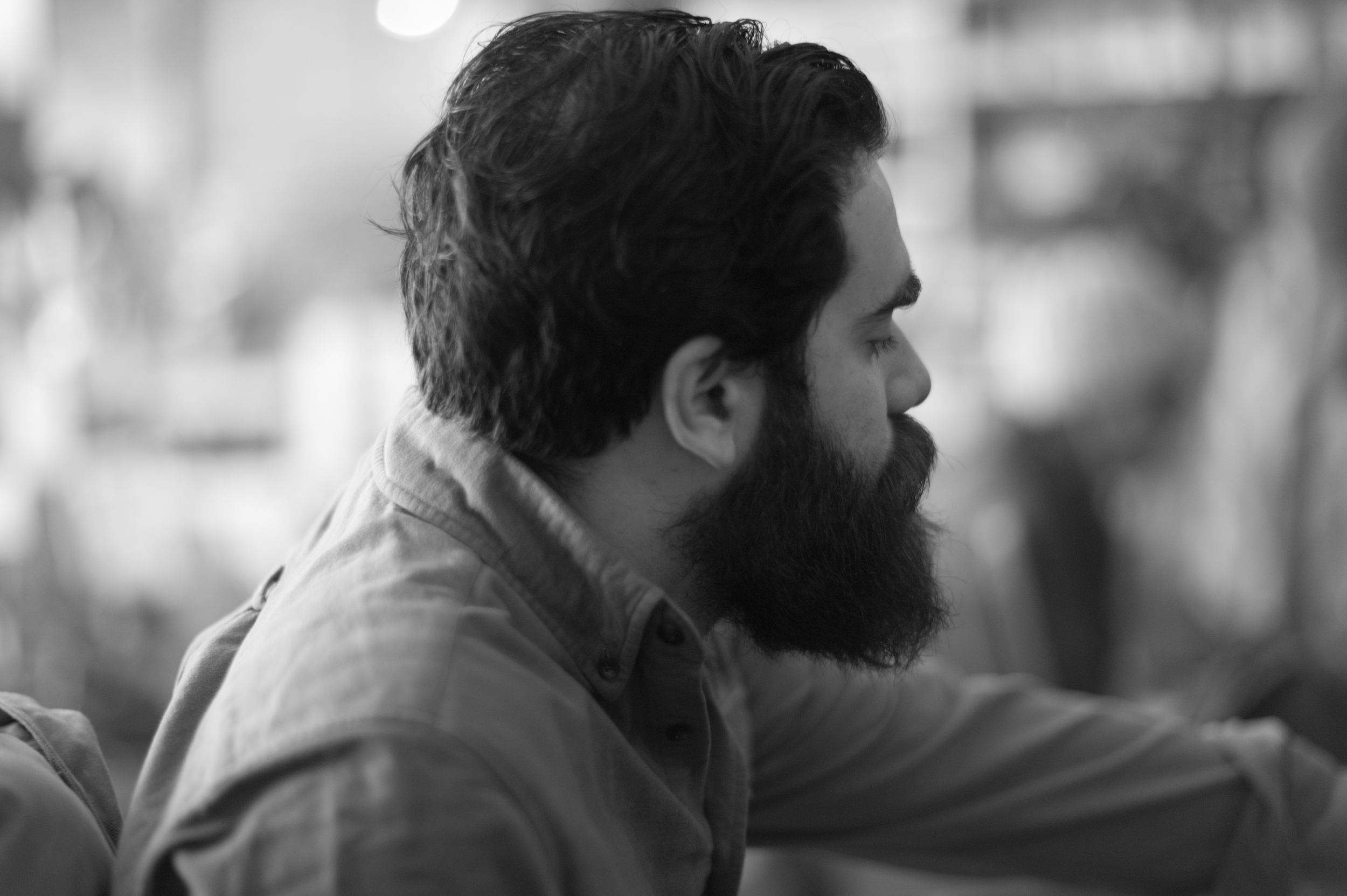
There at another table, a woman sat, reading. She had a “look” that blended beautifully in this eccentric cafe where everyone displayed their “unique colors.” I reached at my Leica Monochrom approximated the distance on the focus dial, set the aperture. Slowly, raising the camera to my eye, the way leopards approached their prey, silent, slow and smooth.
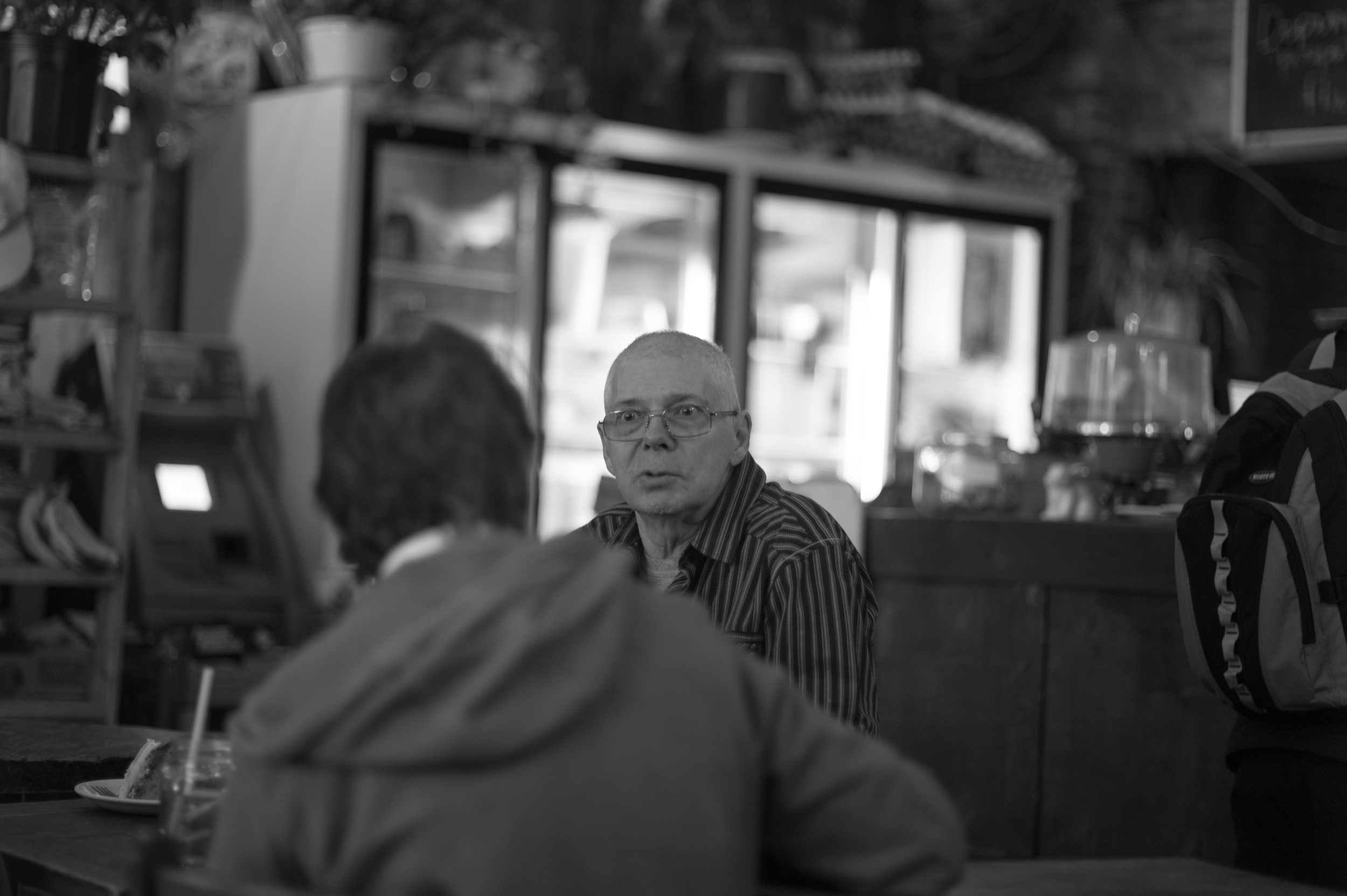
A photographer must be invisible. He must be cautious as not to disrupt the flow of events he is witnessing. This is why I allow the environment to “accept” me, to blend in so I can tell the story as it unfolds. Leica Monochrom has a look that is timeless, a design that reminiscence 1960`s and a compact built that just let people be photographed. This is the reason, it is my companion, and I have names for my cameras just like the things we love to have names, our pets, spouse, children.
A 50mm would be too wide, and a 90mm would be to close to convey the story at times. Leica’s Summilux 75mm f/1.4 is an ideal focal length to be photographing at a cafe. In places where photographers mobility is reduced it is the lenses that allow him or her to get close. That is why 75mm can be a perfect focal length to have in indoors.
I must say, I remember my earlier days in photography in the 80s and 90s professionals would look down upon 75mm focal length. They often felt that 90mm was the portrait and 50mm was the all purpose lens and a photographer did not need another focal length in between the two.
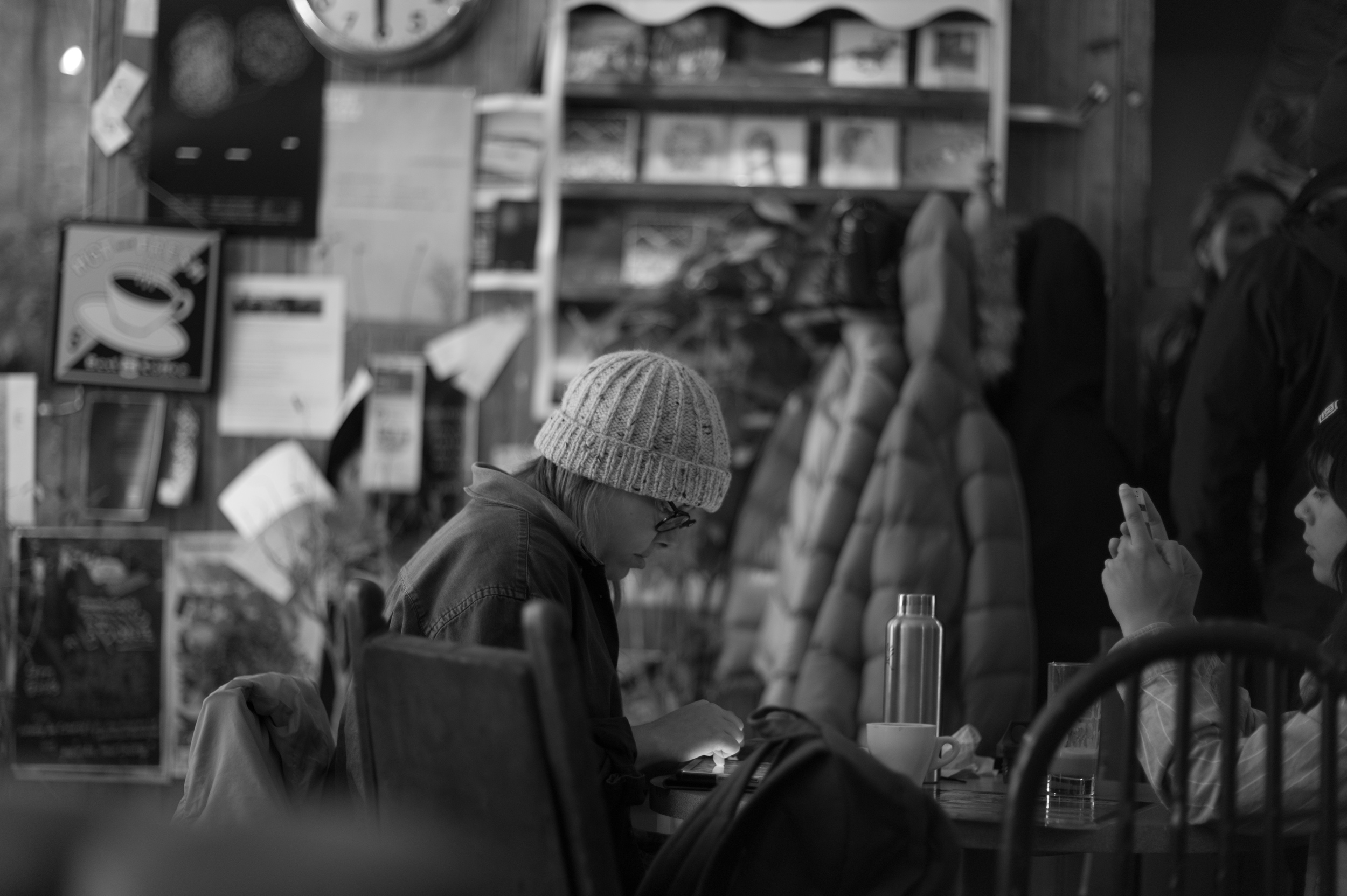
With experience comes wisdom and wisdom beget flexibility. Today, I use my Leica Summilux 75mm f/1.4 more than my Leica Summicron 90mm f/2.0 APO. Each artist finds his or her own tools that he or she feels comfortable with. A photographer learns to see the image before looking through the viewfinder, knows what each focal length will compose before mounting one on his camera. Then comes the telling of the story, each unique and special the way Picasso or Remembrance painted in their own way.
As I gazed the room around me, I saw that moment when love can be seen through the eyes of a child. It was there for me to record. I was the witness and my camera extension of myself to help to share it with the world.
Modern age demands much from us. Computers, smartphones, the internet, work that ask so much more of our time than a decade before. Simple conversations with friends at a cafe is a less common sight to see then people staring at laptop screens. We all crave to connect with the world around us, find those common elements that make us human.
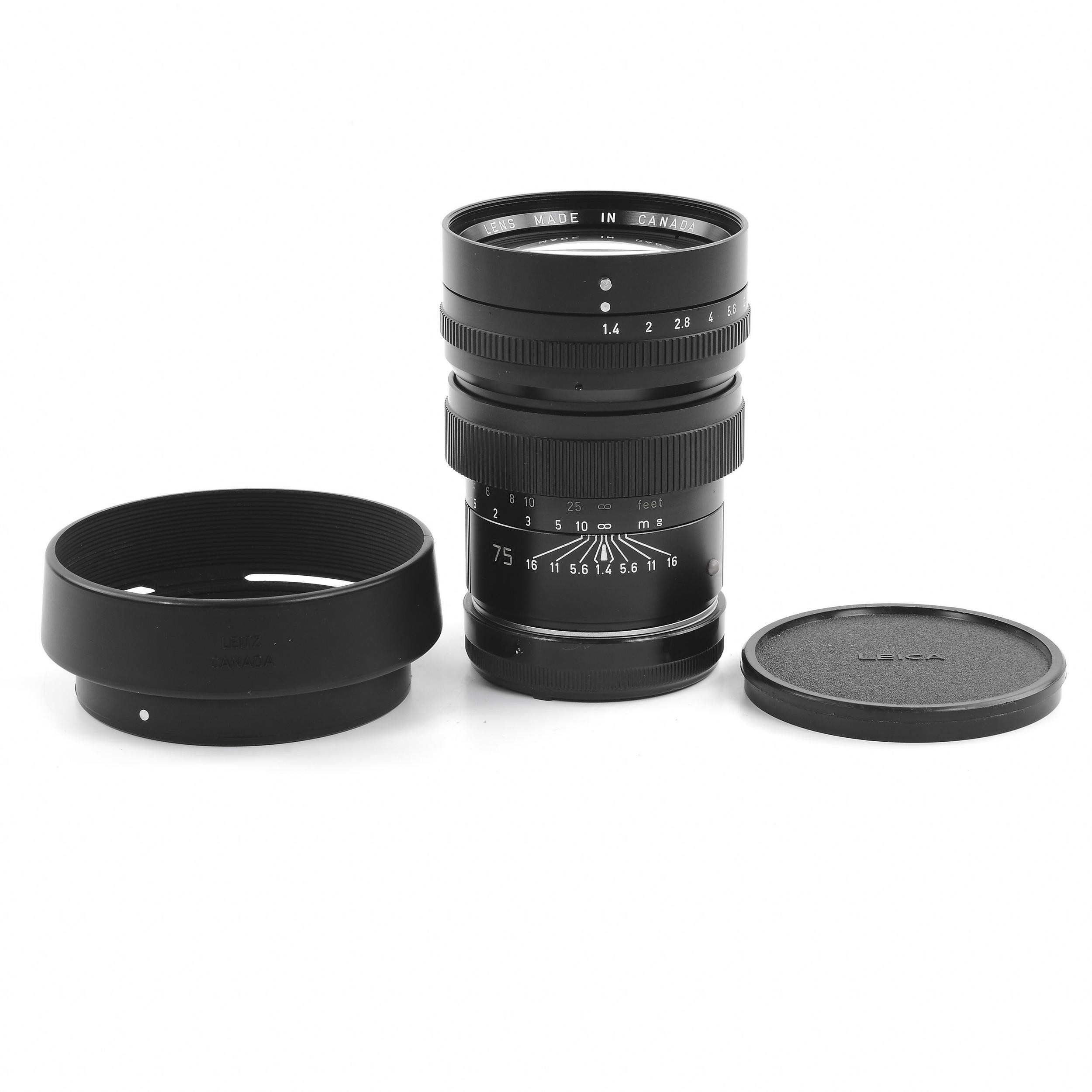
This is why films and photography are enduring arts. They tell us stories from life, a door through which we can look at another person’s life and find commonalities. All this is sometimes forgotten because we are at times lost seeing only the things right before our eyes.
An artist whether he or she is a painter, filmmaker or a photographer is there to remind us of the grandness of life. For this very reason, I feel we all have a responsibility to appreciate the great works that artists share with us.
Here are some links to get the best prices on some of my favorite Leica lenses.
Leica Summilux-M 75mm f/1.4 Lens (Used)
Leica Noctilux-M 75mm f/1.25 ASPH. Lens
Leica Summarit-M 75mm f/2.4 Lens
Leica Noctilux-M 50mm f/0.95 ASPH. Lens (Silver) (NEW)
Leica Noctilux-M 50mm f/0.95 ASPH. Lens (Black) (NEW)
Leica Noctilux-M 50mm f/0.95 ASPH. Lens (USED)
Leica Noctilux-M 50mm f/1.0 Lens (USED)
For my upcoming 2019 photography workshops, here are the links
We offer photography workshops around the world specializing in Leica cameras and lenses. You are invited to take part in one because what you gain from a dedicated photography workshop for Leica cameras and lenses. The tips and techniques you will learn in these workshops will take your photography to the next level also will stay with you for a lifetime. We look forward to hearing from you.
As always, if you have any comments please write to us.
Thank you
Oz Yilmaz
Leica Review Team
